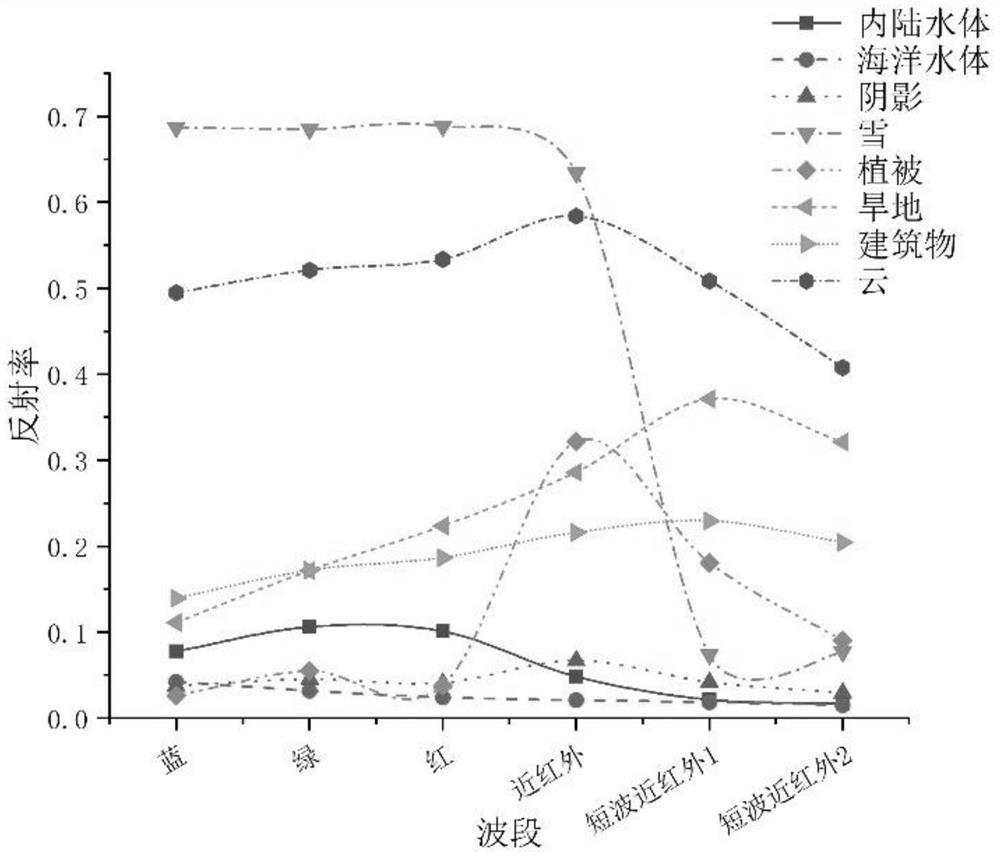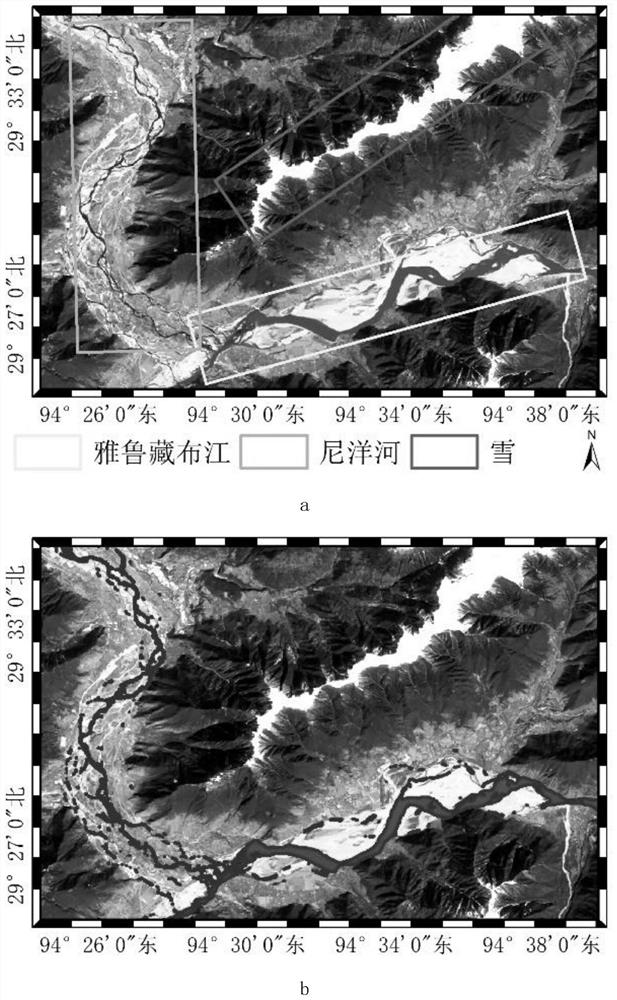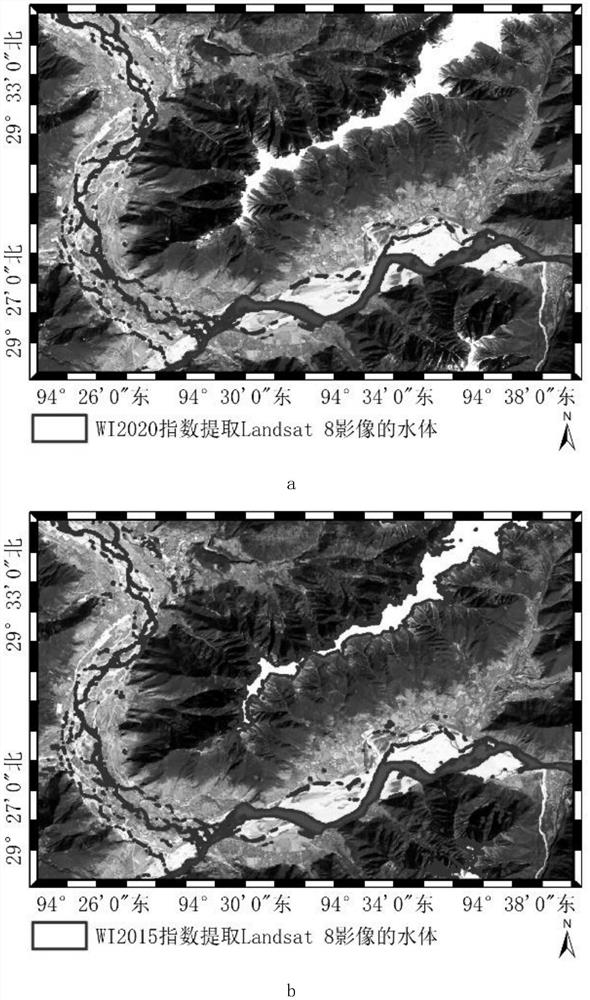Method for extracting water body based on multispectral remote sensing data
A remote sensing data and multi-spectral technology, which is applied in the field of multi-spectral remote sensing, can solve the problems of difficult and high-precision water body information extraction and lack of universality, and achieve good applicability, easy promotion and application, and good robustness
- Summary
- Abstract
- Description
- Claims
- Application Information
AI Technical Summary
Problems solved by technology
Method used
Image
Examples
Embodiment Construction
[0028] The present invention will be described in detail below in conjunction with specific embodiments.
[0029] Step 1: Use high-resolution satellites, namely Landsat 8, Sentinel 2, and GF 1, and select a large number of reflectance data for eight surface types, including inland water bodies, ocean water bodies, shadows, snow, vegetation, and dry land , buildings, clouds.
[0030] Step 2: Average the reflectance data of the eight land surface types selected above to obtain the average reflectance of each land type; the average reflectance figure 1 shown.
[0031] Step 3: Divide each band of the average reflectance corresponding to each surface type obtained above by the respective reflectance of the green light band to obtain the corresponding proportional coefficient; the results of the proportional coefficient are shown in the following table:
[0032] Table 1 Scale factor results
[0033]
[0034]
[0035] Step 4: Combining the proportional coefficients in Table 1 ...
PUM
 Login to View More
Login to View More Abstract
Description
Claims
Application Information
 Login to View More
Login to View More - R&D
- Intellectual Property
- Life Sciences
- Materials
- Tech Scout
- Unparalleled Data Quality
- Higher Quality Content
- 60% Fewer Hallucinations
Browse by: Latest US Patents, China's latest patents, Technical Efficacy Thesaurus, Application Domain, Technology Topic, Popular Technical Reports.
© 2025 PatSnap. All rights reserved.Legal|Privacy policy|Modern Slavery Act Transparency Statement|Sitemap|About US| Contact US: help@patsnap.com



